The Lawmatics Blog
Insights on legal marketing, automating the law practice, and legal tech in general
About the session
Behind every great client experience is a system quietly keeping things on track. The newest automation updates in Lawmatics build on that foundation, making it even easier to build and manage their automated workflows.
In this session, Devon Butler and Clare Struzzi walk step-by-step through what’s new. They cover trigger-based automations, appointment workflows, shared entry rules, and a simple way to organize everything in folders. Together, these improvements give firms even more control, flexibility, and time back in their day.
Webinar slide deck
Marketing your law firm, whether you like it or not, is a necessary part of attracting and retaining clients. Because despite how adamant you may be that providing a good service should be enough to grow your business, marketing plays a critical role in the overall success of your law firm. What’s more, marketing your law firm today isn’t the same as it was 20 years ago. Whether you just opened your practice or have been at it for some time, it’s easy to fall behind on the latest marketing methods and tips to get the most return on your investment. Without further ado, here are five top tips for marketing your law firm in 2022.
1 Your website matters
Your website should be the cornerstone of your entire marketing strategy. But why does your law firm need a website when your business is visible from the street or featured in the local paper?
It establishes your credibility
If a potential client Googles you and can’t find a website for your law firm, they may question the validity of your business. After all, in a world where even amateur photographers have websites, why wouldn’t an attorney have a website as evidence that they exist.Your law firm’s website is an opportunity to shine by showcasing your strengths and proving you’re as credible, if not more, than your local competition. Use the real estate on your website to highlight cases you’ve won, and share customer testimonials— show a prospective client why you’re the best person for the job. This is done by both demonstrating your abilities and the human element of your business. Beyond the content of your website, the design and user experience matters equally. It must look professional and well constructed, with an easy-to-navigate layout. For this reason, it’s highly recommended to hire a skilled professional to design your website.Your design should have:
- High-quality photos
- Clearly stated services and practice areas
- Awards and recognitions
- Previous experience
- A strong call to action
It generates leads and increases visibility
The better optimized your law firm’s website is for SEO, the higher you’ll appear on Google results. The higher you appear in Google’s search results, the higher the likelihood that you’ll be found by someone seeking legal representation in their area. By nature, humans want as effortless of an experience as possible. 95% of web users will never click past the first page of Google search results, aka Google SERP. Yet 25% of people will call the first three law firms listed. In short, if you don’t show up on page 1 of Google, you may as well not exist.
It will streamline your client intake process
If you’re a smaller firm without the luxury of a front desk staff, then your website can serve as a full-time receptionist. It can provide answers to frequently asked questions, helpful information such as your location, the option to self-schedule consultations, and a client intake form for prospects to fill out that will automatically push their information into your intake software. From that point on, prospective clients are tracked from every stage of the client journey, ensuring that no engagement opportunity is missed. Client intake software seamlessly moves leads from one stage to the next thanks to custom marketing workflows, not only saving you time but delivering a positive customer experience at each step.
2 Embrace the TikTok era
We live in a digital world where people are more distracted than ever. While words will always be valuable, it’s a lot easier to grab someone’s attention with a video than a wall of text. Platforms like TikTok are fun and entertaining, and during these times of Covid, a climate crisis, and political unrest, many are looking for an escape from the exhausting news cycle. Entertainment aside, video also humanizes your business which, in turn makes you and your staff more relatable to legal consumers.The great thing about video is that there are so many different ways to use it as a marketing tool. Some lawyers find great success in adding a quick 30-second legal tip to their social media channels each week. Others create funny, relatable videos about the seldom seen side of an attorney’s life. It all depends on how much work you’re willing and able to put into video creation. In the end, it’s better to have something than nothing, so don’t fret over production value or media experience. Regardless of whether you’re ready to learn a TikTok dance or not, one thing is for sure, video grabs more people's attention in today’s distracted society, even if as simple as a quick informational video recorded with your iPhone.
3 Five stars or bust
We live in a star-rated world where consumers value a Google review as much as they would a personal recommendation. Not only will a strong rating on Google make you look more credible to prospective clients, but it will also result in a higher ranking on Google search results. Remember— the winners are at the top. If you don’t have a Google My Business profile set up yet, then you might want to do that—now!Don’t be afraid to ask for reviews — in fact, it’s encouraged, particularly when clients have visibly or verbally expressed their satisfaction with your service.If you somehow manage to get a poor review, don’t panic. One negative review in a pool of positive ones won’t risk damaging your overall reputation. The best way to respond is to remain calm, apologetic, and offer a solution if you can. On the other hand, if you’re noticing the same negative points coming up in reviews, it may be an opportunity to address the problem area and make changes where necessary. Even though criticism can be hard for your ego, reviews can be an extremely effective way to learn what’s working and what’s not.
4 Leave the legwork to marketing software
Email remains one of the most ubiquitous forms of communication. For that reason, launching a weekly newsletter is still an extremely effective way to stay top of mind. If you’re thinking, “You want me to learn TikTok and now you’re asking me to take time out of my already spread thin schedule to write a weekly newsletter?” don’t worry, there's software for that.The last thing lawyers need is a more time-consuming task to add to their plates. That’s why delegating your marketing efforts to automation software can be a time changer. Marketing automation makes it easy to send scheduled and tailored content to specific email lists using audience segmentation software. With automation, you can create a digital marketing campaign that delivers pertinent messages to the right person at the right time, on autopilot. Automation features like drip email marketing send out emails based on triggers of your choice, whether someone signs up for your newsletter or schedules a consultation. What’s more, you can track every interaction and analyze contacts’ behavior thanks to data so you can fine-tune your marketing strategy.
5 Start a blog
A blog is a great way to create fresh content on your website that keeps Google’s search engine happy, while also establishing your authority and legal experience. The more relatable and informative you can make every blog post, the more likely legal consumers are to read and share your content.If you’re not sure where to begin, try starting with addressing your clients' most frequently asked questions. Offer a hot legal tip of the day, or highlight one of your staff members. Get to know what the most commonly searched phrases are related to your practice area like “how much time do debt collectors have to sue for payments?” or “Is it legal to record a conversation?” Finding out what questions people are asking can be a great source for writing information for your legal blog. Make sure that you sprinkle your blog with plenty of relevant keywords that will push your content even higher on Google search results, which is known as SEO (short for search engine optimization.) Check out our guide to law firm SEO marketing here.
Stand out and grow your practice with Lawmatics
Law firm marketing can seem like a time-consuming part of running a law firm that you’d rather not have to deal with. Nevertheless, it’s a necessary ingredient for law firms who want to generate more clients at a steady pace.Yet marketing your law firm and generating a steady stream of leads isn’t all it takes. You’ll need to have an effective system in place to keep track of all of your contacts and ensure no opportunity gets missed. When you consider that the average law firm takes three or more days to respond, it’s easy to see that many busy lawyers struggle to keep up with the success of their marketing efforts.By using legal technology like a CRM and client intake software like Lawmatics you can ensure no opportunity is missed, and automation takes care of your follow-ups so you can focus on what you do best — practicing law. Are you ready to see how Lawnatics all in one legal client intake, CRM, and marketing automation can put you on the top of Google search results? Sign up for a free product demo today!Sources CitedMatt G. Southern, Search Engine Journal, Over 25% of People Click the First Google Search Result, July 14, 2020https://www.searchenginejournal.com/google-first-page-clicks/374516/#closeNathan Thompson, OptinMonster, 10 Crucial SEO Ranking Factors You Need to Know, March 8, 2022https://optinmonster.com/seo-ranking-factors/
Summer is heating up and so is the latest batch of feature releases from Lawmatics! You’ll be delighted to see these new additions and improvements from our team to yours.
Date Field-Based Automations
We are thrilled to announce that you can now create time-relative automations (one hour before, two days after, etc.) for any date type field in Lawmatics. Our new Date Field-Based Automations take the existing concept of event-based automations and apply it to date fields. This new functionality allows you to trigger automated reminders or check-ins relative to a client’s court date, filing date, anniversary, or any other custom date field you may use in your practice — all from simply populating the date into a date type field.When creating a new automation you’ll select the Date Field option, then select from any of your firm’s date type fields as your target field to create a Date Field-Based Automation. You can then add your time-relative automations by clicking on the yellow label at the top of your page (highlighted below).To learn more about Date-Field Based Automations, click here.
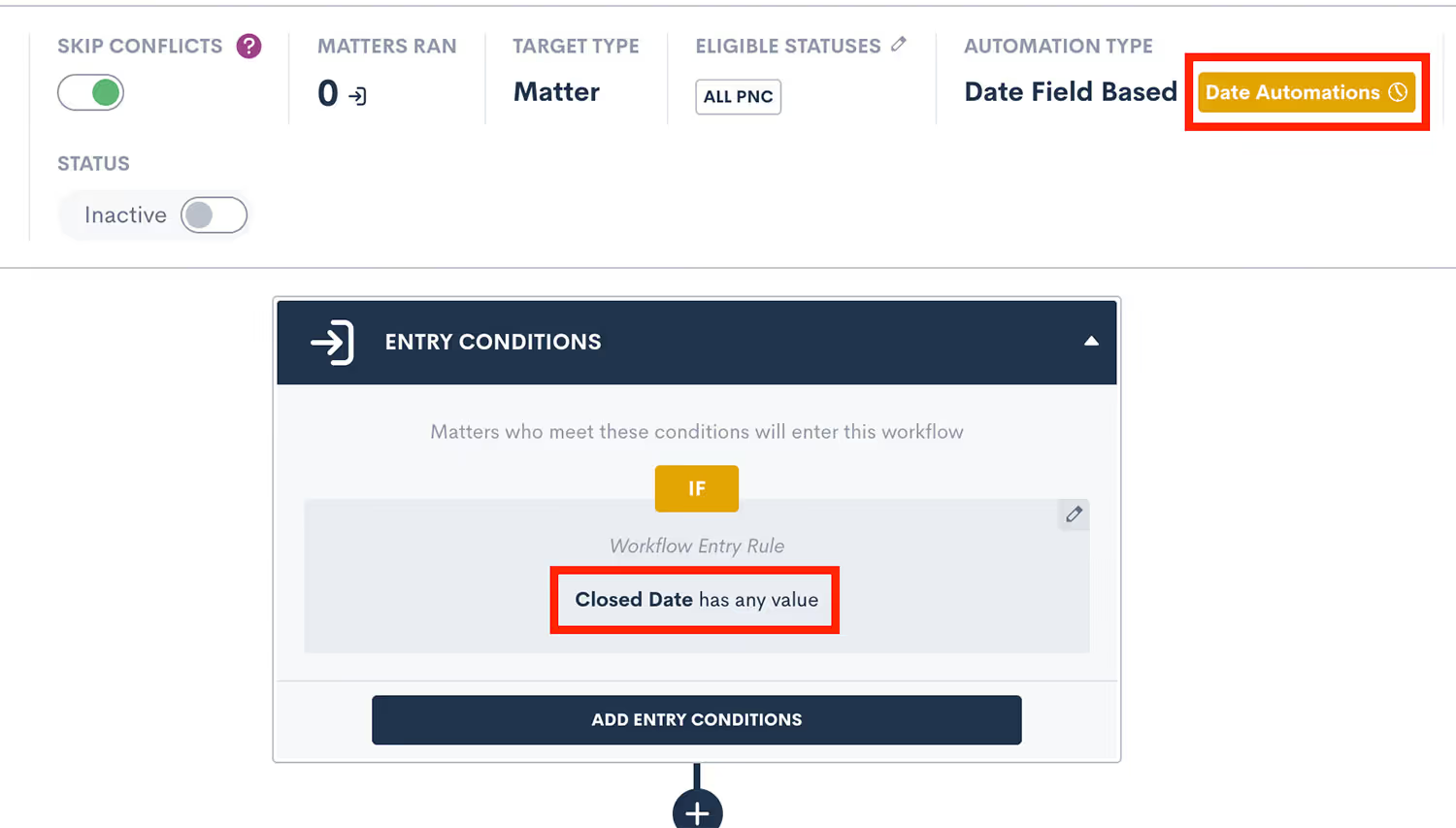
Custom User Permissions for Viewing Email Communications
Confidentiality and discretion are paramount when dealing with sensitive client information. While logging your external emails in Lawmatics can be helpful, you may not want the entirety of your staff to have view access to these emails on a matter’s timeline. With our new External Email Role Permission you can now easily limit any user’s access to view email communications, without limiting their access to the matter all together. To use this new permission, go to the User Management page in your Admin Settings, Click Manage Roles, edit the role you wish to apply this restriction to, and then uncheck the All Emails option, as shown below.
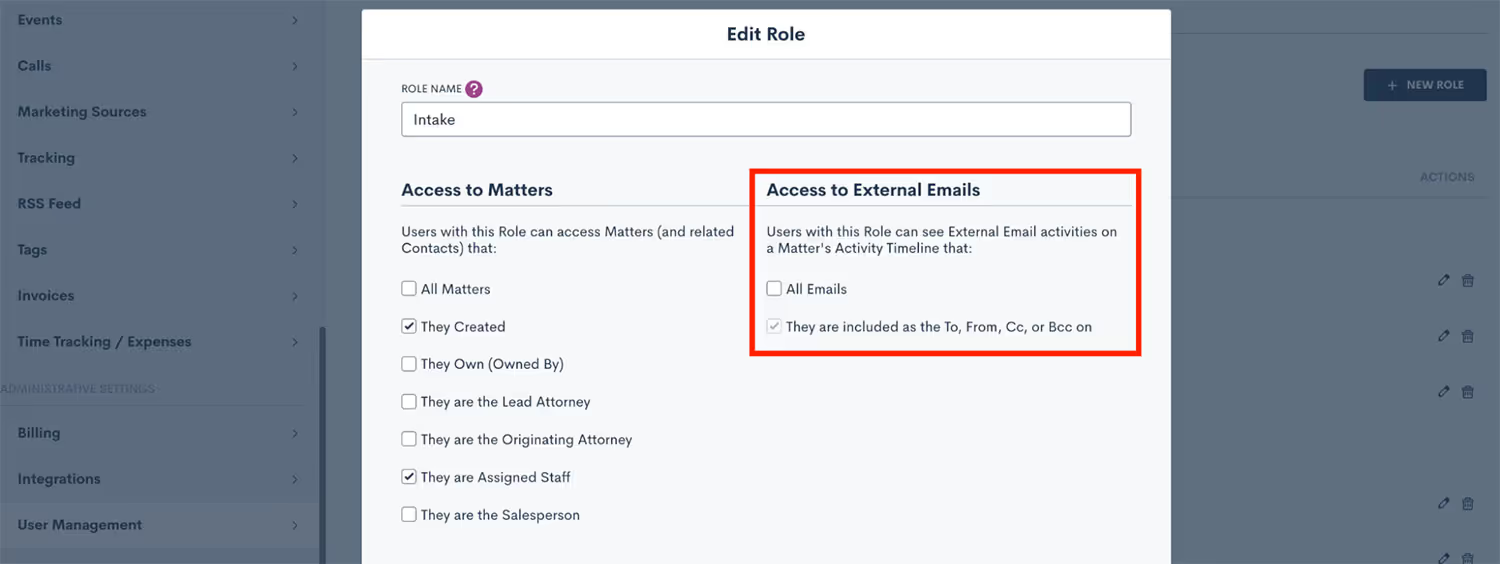
Not yet using custom user roles? Learn all about that option here.
Set Default Tax Adjustment
With this latest update to Lawmatics Payments, you can now set a default percentage or flat amount for tax adjustments. While the default can be overridden when creating an invoice if necessary, setting a default will save you the time of entering a tax amount on each invoice if your firm does have a standard rate or amount. This adjustment can be applied to the invoice subtotal, expenses, or time entries, as shown in the example below.

Find this option on your firm’s Invoices settings page. If you are not yet using the Time & Billing feature in Lawmatics, email us at support@lawmatics.com to add it to your account.As always, we hope you enjoy these latest updates from Lawmatics and stay tuned for another round of releases in August.
There are plenty of benefits to being a multi-state lawyer. Besides the most obvious advantage which is expanding your client base, it can also be practical when you live near a border between two different states. So, if you find yourself asking how to practice law in multiple states, you’re certainly not the first. In this article, we’ll detail how to become a multijurisdictional lawyer as well as some of the perks and drawbacks involved.
The benefits of practicing law in two or more states
Greater client base
It’s understandably appealing to be able to take on clients in different states. It’s economically advantageous to generate more business in multiple locations. Not to mention one state may have more demand for a certain practice area than another which can be practical for tapping into your niche market. Furthermore, you may have clients that need representation in different states who don’t want to have to hire multiple lawyers. Being able to offer all-in-one legal services can give you an edge over the competition. Of course, it goes without saying that you’ll need to allocate a bigger law firm marketing budget to market in not just one but multiple states. Or, just be more savvy with marketing strategies, such as familiarizing yourself with email marketing for law firms.
Greater flexibility
Life events can spring up suddenly, forcing lawyers to relocate to a different state. Some states may only offer bar exams as little as twice a year, and as such, it can cause a significant delay before being able to accept clients. For many lawyers, anticipating the possibility of relocation without the worry of having to lose a second of work is an important advantage. So, ensuring they can practice anywhere is a nice added security to their business.
Ethical responsibilities of practicing law in multiple states
As more and more lawyers are working remotely since the onset of COVID, many are accepting clients in other states. Unfortunately, in many cases, these lawyers are violating the rules.Rule 5.5 of the American Bar Association Model Rules of Professional Conduct states that lawyers may not practice in jurisdictions where they are not admitted. The consequences of violating these rules can range from a fine to disbarment depending on the gravity of the violation. That being said, there are some exceptions to this rule. For example, a licensed attorney may provide legal services temporarily in a different jurisdiction as long as they are associated with a lawyer who is admitted in that state.
How to practice law in multiple states
Check for states that offer reciprocity
Some states offer reciprocity if you meet certain conditions. Usually, these conditions depend on the amount of time you’ve been practicing and they may consider you eligible to practice in their state depending on the state bar that you’ve already passed. It’s important to note, however, that you should never assume that just because a state offers reciprocity, you’ll be qualified. It’s always important to contact the reciprocity state bar to ensure you are up to date with the latest policies otherwise you could risk serious disciplinary consequences.
Take the uniform bar
You might need to brush up on your legal education to retake the Uniform Bar Exam. The Uniform Bar exam, also known as UBE, is a version of the bar exam that lets you practice between states with greater ease. It’s important to note, however, that each state has its own bar admission requirements for the examination, and the passing score may vary by state. So, although it can be a solution in some scenarios, it’s not a sure thing. This is certainly more convenient than taking New York State, North Carolina, or any other state's bar exam each time.
Take the bar exam for the states you want to work in
The most practical way to practice in another state is to pass the bar for that state. However, there are significant costs and challenges involved which may not be ideal for everyone, and taking the UBE or opting for a state that offers reciprocity is much more common.
Take on federal court cases
In theory, if you’re allowed to practice law in any state then you should be able to do so out of state. Yet, there is still some debate around this topic, and it’s still possible to find yourself in hot water with the state bar if you take this route.
Is getting licensed in multiple states right for you?
In the big picture, it’s much more convenient to practice in one jurisdiction for your entire career. Yet, lawyers looking to take their practice to the next level may choose to pursue the route of becoming a multi-state lawyer despite the challenges. The good news is that thanks to advancements like the UBE and reciprocity laws (as well as advancements in law firm technology), practicing law in another state is much easier than it was 20 years ago. Deciding whether to get licensed in multiple states will come down to your unique circumstances and above all, how much time you have on your hands.Getting licensed out of state requires a time commitment and administrative pile-up that may be difficult depending on your firm’s current workload. Putting in the work it takes to acquire additional state licenses will be much easier if your practice is streamlined with the help of modern legal technology like a CRM and client intake software. Not only can you access your firm from wherever you are thanks to cloud technology, but automation can help you stay on top of your most important tasks, and put your firm on autopilot while you’re focusing on passing the bar in another state. Are you ready to see how Lawmatics all in one client intake, law firm CRM and marketing automation for lawyers platform can help you with a multijurisdictional career in law? Our CRM also provides law firm performance management features. Sign up for a free product demo today! Sources CitedShari Davison, Reciprocity: What States Can You Practice Law?https://www.onbalancesearch.com/reciprocity-what-states-can-you-practice-law/Richard J. Rosensweig, Unauthorized Practice of Law: Rule 5.5 in the Age of COVID-19 and Beyond August 12, 2020https://www.americanbar.org/groups/litigation/committees/ethics-professionalism/articles/2020/unauthorized-practice-of-law-rule-55-in-the-age-of-covid-19-and-beyond/
When the COVID-19 pandemic hit in early 2020, it took the world by surprise and turned many industries, including the legal sector, upside down. At first, employment losses were seen as just one of the many disruptions brought on by the pandemic. However, as the pandemic reaches the two-and-a-half-year mark, people are leaving their jobs at higher and higher rates – four million workers quit their jobs in July 2020 – leading to what experts call the Great Resignation.Despite a strong labor demand, low unemployment rates, and the availability of vaccinations to ease the severity of the coronavirus pandemic, workers began to leave their jobs in droves in the spring of 2021, perhaps because they accepted a better job elsewhere, could not find childcare, or decided to start their own business. Some have suggested that they left their positions for other reasons tied to COVID-19: the crisis led some employees to reevaluate life priorities, or their employers demanded that they return to the office after allowing them to work remotely in 2020. But whatever the reason it began, the Great Resignation appears to be far from over. A record 4.5 million workers left their jobs for reasons other than retirement in March 2022, an increase of 152,000 from the month before. Yet, ironically, there were 11.55 million job openings at the end of March 2022, the highest on record.The legal industry has been especially hard hit with resignations. When lawyers began to work from home due to quarantine requirements, many were confronted with a problem that has existed within the legal industry for many years: attorney burnout. A recent global survey conducted by Ontra, a leader in contract automation and intelligence, concluded that 64 percent of the legal professionals surveyed felt that being bogged down by routine, manual work hurts employee morale and 92 percent said they believed that it would be beneficial if more processes were automated or outsourced to an alternative legal services provider, a legal technology provider, outside counsel, or all three.Now, while law firms are seeking a return to normal, the legal industry emerging from the pandemic is vastly different from the one that entered it. Much of the change is now occurring inside law firms as attorneys continue to reevaluate their careers and life priorities. The real challenge for law firms in 2022 involves how they will adapt to these changes, rather than simply relying on what worked for them in the past.
Legal market is strong, but talent remains in short supply
When the world is in crisis, lawyers tend to get busy. The legal market has rebounded strongly, and, for the most part, firms are performing well financially despite the ongoing presence of COVID-19. Still, lawyer retention continues to be a massive problem for the legal sector. In 2021, firms lost nearly 25 percent of their associates, many choosing a better work-life balance over retention bonuses. Herein lies the problem: the rising demand for legal services continues to collide with the evolving work preferences of lawyers, and although compensation has reached some of the highest levels in more than a decade, retention continues to plague the industry. After recovering from the worst of the pandemic, law firms now face an unprecedented battle for talent. Even with a new hybrid/remote work model that has been more prevalent since the beginning of the pandemic (although many other industries have been embracing it for decades), long hours continue to be the exception, not the rule, for many attorneys. With the volume and pace of the work so extreme and the pressure so great, more and more lawyers are seeking better opportunities elsewhere. As a result, firms are being forced to confront the realities of a post-pandemic workforce and adapt successfully to those challenges or risk failure. According to the 2022 Report on the State of the Legal Market, “the traditional law firm response of just throwing more money at the problem is not likely to work as well going forward.”
Leveraging technology to retain lawyers
Law firms were caught drastically unprepared when the pandemic hit. As a result, many scrambled to enable remote work environments and leverage the right technology to keep their lawyers and staff engaged enough to meet ever-growing client demands. Although some hoped this frantic adoption of technology would finally bring the legal sector up to speed and serve as a workflow solution for these overworked, frustrated legal professionals. However, due to disproportionate or misdirected tech spending, many lawyers continue to struggle with a myriad of point solutions and disconnected tools that make providing legal services even more frustrating. The technology stacks of many law firms would likely reveal point solutions that are neither integrated with core systems nor fully able to deliver the intended result – give attorneys the information they need to do their jobs when they need it, enabling them to create a high-value work product with the least amount of manual effort. To make the most of their tech stacks, law firms must shift their focus from purchasing more point solutions to embracing collaboration technology to allow for a more seamless workflow and team effort.
What is collaboration technology, and what does it have to do with staff retention?
Collaboration technology, not entirely new to law firms but not yet widely utilized, defines the tools and systems intended to better facilitate working together as a team, both in the office and remotely. Just as the name implies, collaboration technology involves a cooperative effort to break down technological silos across a law firm. Collaboration technology provides many day-to-day benefits to lawyers. For example, many business lawyers spend most of their time drafting and reviewing legal contracts in Microsoft Word or Outlook. However, with a basic deployment of a collaborative platform like Microsoft Teams (which most law firms already have), attorneys can co-author documents in real-time, create knowledge repositories that offer easy access to precedent, and easily communicate with team members. Here, collaboration eliminates the need for manual search across multiple systems, emailing versions of a document back and forth, and endlessly searching through their email inbox for updates. With the addition of optimized workflow, document automation, task management, and AI functionality, collaboration technology can also address the specific needs of practice groups, allow clients to actively participate in matters, and shift technology from a tool built for a particular purpose to one that fosters an efficient, more collaborative relationship. According to Heidi Gardner, Ph.D., the author of Smart Collaboration: “When law firms get collaboration right – that is, do complex work for clients that spans practices within the firm – they earn higher margins, inspire greater client loyalty, gain access to more lucrative clients and attract more cutting-edge work.” Legal technology can also control the loss of the institutional knowledge that occurs when lawyers and other staff leave a firm. By incorporating proven best practices within automated workflows or systems, the firm can retain this information, hone these processes, and onboard new employees into proven workflows, increasing their capacity for success.In addition to its functional capabilities, collaboration technology also fosters a healthier work-life balance by allowing lawyers to work anywhere, anytime. It improves client service levels by supporting new ways of working and helps lawyers get their work done more efficiently to meet and exceed client demand. And research shows that it is working. According to a 2021 survey conducted by Mitratech Holdings, Inc. 64 percent of in-house legal employees said that legal tech had improved their workflows and workplace experience, which in turn boosted employee retention and overall job satisfaction.
More retention-building strategies for law firms
There are many options for harnessing legal tech to improve employee wellbeing and retention. But to survive (and thrive) in the challenging times that lay ahead, law firms need to put lessons learned from previous downturns into practice. Some of these include:
- Gain a sharper focus. During the pandemic, the attitudes of legal clients shifted dramatically. They want their attorneys to truly be there for them. As your clients’ priorities shift, create a plan to help meet their needs by investing in relevant knowledge and other services that will help strengthen your attorney-client relationships. Any established strategic initiatives connected to immediate client needs should be continued and perhaps even accelerated.
- Clean up company culture. A company’s culture – the attitudes and behaviors of a law firm and its employees – is a vital part of staff retention. Yet, according to a January 2022 International Bar Association (IBA) survey of 3,000 lawyers aged 40 and under, almost half of the female respondents raised concerns over their firms’ failures to address toxic workplace cultures.
- Be more relevant to clients. Modern legal clients are flooded with information from the internet, social media, and well-meaning friends. Your firm must provide relevant information that extends beyond the typical articles or emails to give your clients a proper perspective on their legal issues. Consider what channels you can use to get your viewpoint across to clients.
- Practice empathy. Your law firm would not exist without your people. As the pandemic rolls on and people continue to contract COVID-19, acknowledge the personal elements of the crisis. Demonstrate empathy, flexibility, collaboration, and frequent communication with your employees, and strive to make work meaningful for your entire staff.
- Price strategically but fairly. In past downturns, the most successful law firms continued to charge standard rates but partially offset those fees with increased client, matter, and one-time discounts, well-timed investments, and flexible payment terms when appropriate. If done strategically, these can effectively meet your clients’ needs while strengthening your firm’s bottom line to position it well when the economy recovers.
- Cultivate a granular view. Try to move beyond the basics of day-to-day law firm ops to the best practices of funding priorities – not just for the near term but also to help move forward out of the crisis. Now is the time to cultivate a granular view of the sectors, clients, practice areas, and geographies your firm is currently prioritizing. Decisions made now will likely shape your firm’s direction and culture today and in the long term.
No single course of action will suit all firms in the current rapidly evolving legal environment. But considering what is at stake – client relationships, firm culture, near-term resilience, and the ability to retain valuable talent – those that maximize technology and use it to maintain a long-term perspective will be more favorably positioned to thrive in the next “new normal.”
Collaboration technology, Lawmatics style
Legal technology continues to evolve, and the time has come for law firms to implement collaboration technology. Clients are no longer satisfied with the status quo in the delivery of legal services, and associates and other legal team members want tools that help make their work easier and allow them to make higher-level contributions. Fortunately, many firms are now moving away from adopting standalone, one-off platforms in favor of implementing flexible, single-source, seamlessly integrated legal tech systems that support collaboration technology to create a more positive workplace for current and future law firm employees. Lawmatics is built around collaboration technology, and we’re ready to help your firm maximize your tech stack. Our platform allows firms to seamlessly integrate with the legal technology applications you might already be using in your firm – Clio, Zapier, Rocket Matter, PracticePanther, LawPay, and others. The integrations we provide will enable your team to:
- Maximize your current technology
- Automate repetitive tasks between apps
- Accomplish complex requirements and functions
- Streamline time and billing management
- Easily accept credit card and other online payment methods
- Improve productivity and efficiency
- Save valuable time
What law firm doesn’t want to earn greater margins, tackle challenging new work, represent more profitable clients, and retain valuable talent? Lawmatics will help you reach these goals and propel your firm into the future. Request your demo today to find out more about how the Lawmatics platform will help you eliminate the silos and build a best of class tech stack for your law firm.
Recently, Lawmatics teamed as a sponsor for MaxLawCon, an annual two-day conference held in Saint Louis, Missouri. With a little over 250 attendees, it was two exciting days packed full of knowledgeable speakers and industry leaders sharing strategies and tactics around managing a law firm from 2022 onward.The attendees, many of which were already familiar with Lawmatics, were largely tech-savvy legal entrepreneurs eager to learn and interact with law firm technology vendors like ourselves. Our own Anna Gasperlin was there to represent Lawmatics who says she was tickled by how many current customers were selling Lawmatics to prospects without her having to do a thing. “I would be chatting with current Lawmatics customers and prospects would stop by, to which current customers would say ‘you have to switch from Lawmatics to Clio Grow!’ so I really didn’t have to do that much convincing!” she chuckles, “It was great!”There to join Anna virtually to represent Lawmatics was our own CEO, Matt Spiegel, who spoke to the benefits of automation in the law firm as a means to offer attorneys a hands-off approach to repetitive business tasks. The turnout was impressive, and we appreciate everyone who stopped by and greeted us in-person.Lawmatics is committed to helping legal professionals grow their practice with the best all in one client intake marketing automation legal CRM and billing software on the market. Make sure that you stay up to date with our latest updates and releases.
Happy summer to all! We’ve been cranking here at Lawmatics and it’s about to get hot in here. Our engineering team has doubled over the last couple of months and because of that our pace has drastically increased. This is one of our largest releases to date and encompasses many different areas of the platform. Check it out!
Conflict Check Automation
With the recent addition of Conflict Checking in Lawmatics, we have made it easy to streamline this important step by automating your conflict check process. You can now use the results of that conflict check to trigger an automation, initiating the next step in your process. Depending on whether or not a conflict check passes, you are able to trigger a particular sequence of automations for each outcome. Each of these next steps can now be automated accordingly. We have also added the ability to exclude any targets who did not pass a conflict check from your automations, simply use the “Skip Conflicts” toggle at the top of your automations.To learn more about how to use our brand new Conflict Checking feature, click here.
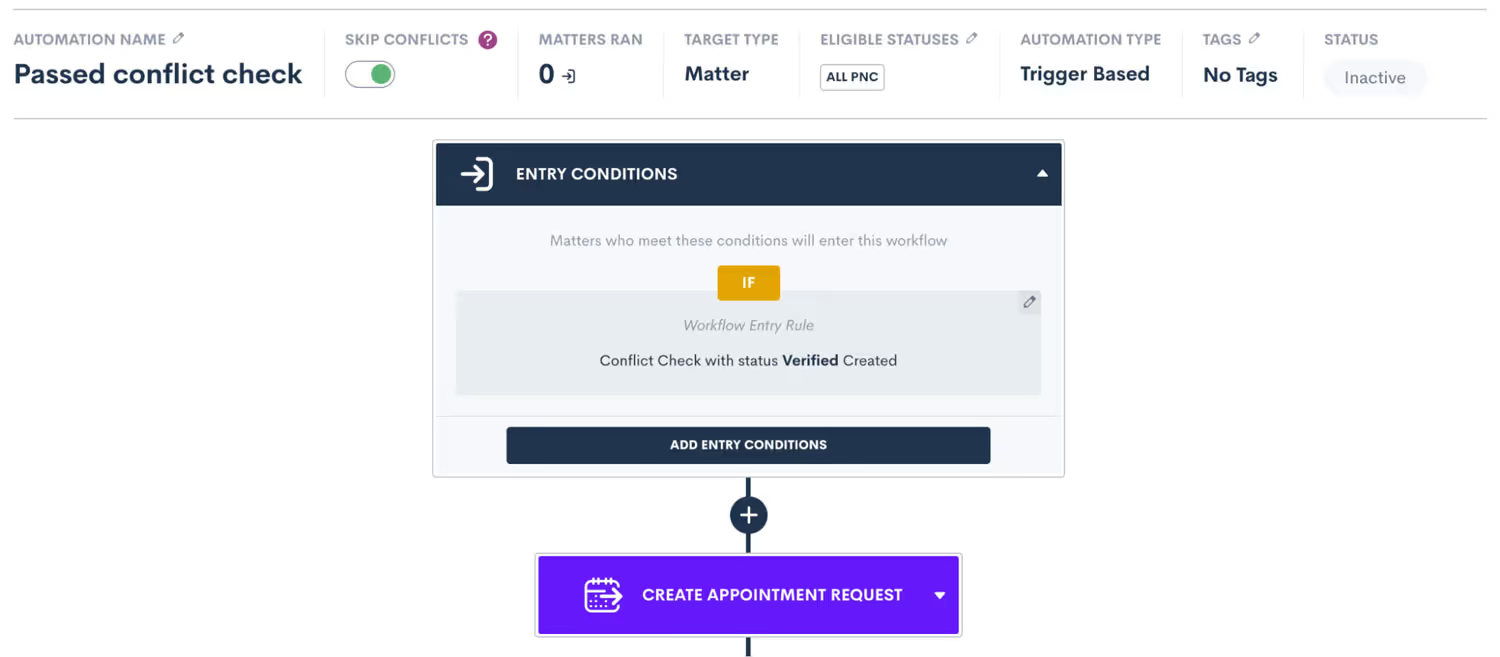
Conflict Check Notifications
Adding to the conflict check capabilities in Lawmatics, users can now opt to receive notifications for approved, denied, and/or undecided conflict checks. These email notifications provide yet another way to stay up to date on your firm’s PNCs without needing to be sitting in front of your computer screen. Each user can customize their unique notification options with the ability to toggle both account-wide and user-specific notifications on and off.
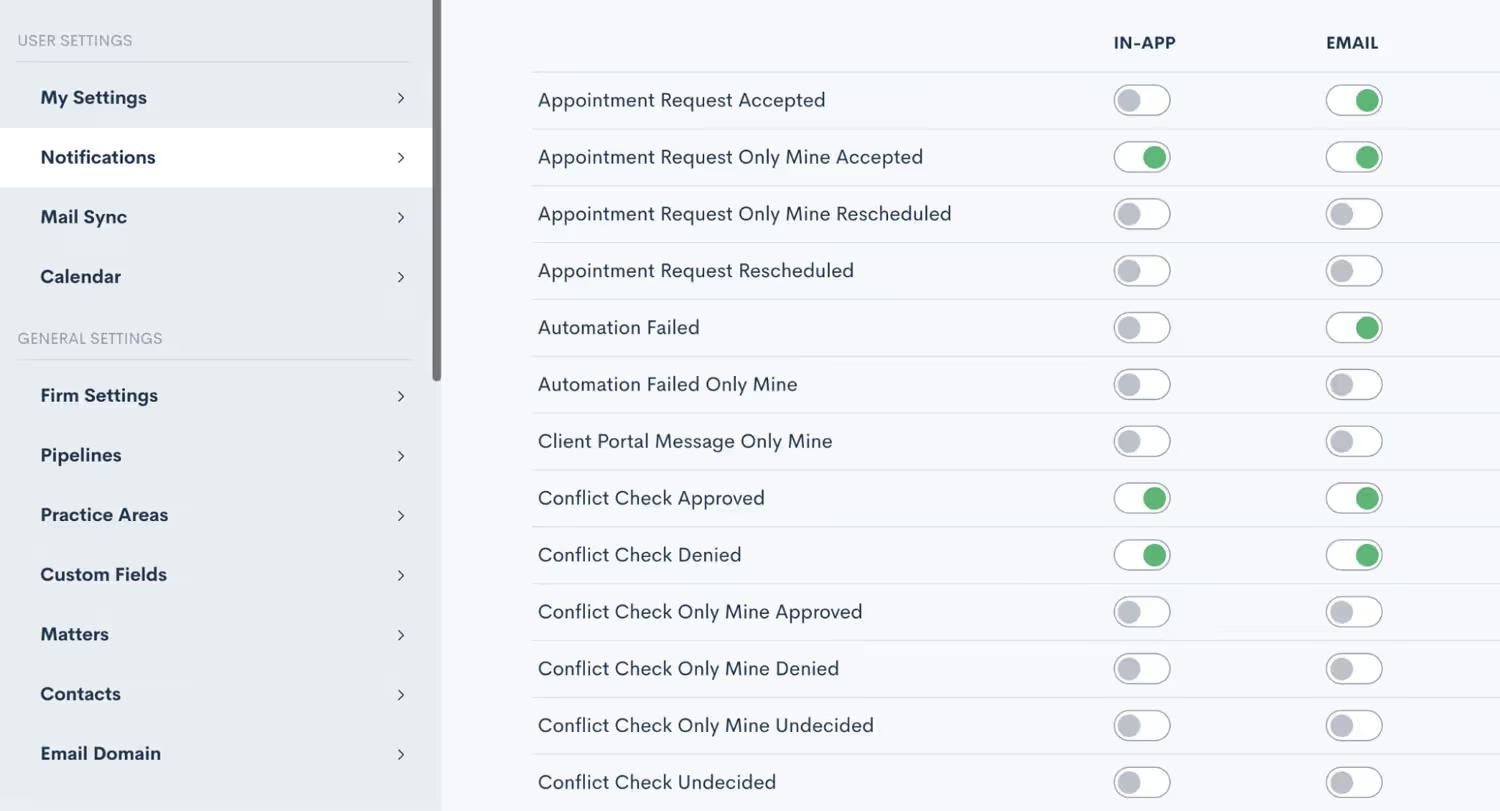
Multi-pick List in Custom Form Conditionals
A highly requested feature, you can now use multi-picklist fields to set conditional logic within your Lawmatics Custom Forms. Previously, this ability was limited to true/false fields and generic picklist fields. This addition allows for even more customization and automation to the custom forms feature that you already know and love. To learn more about how to use conditional logic in Lawmatics Custom Forms, click here.
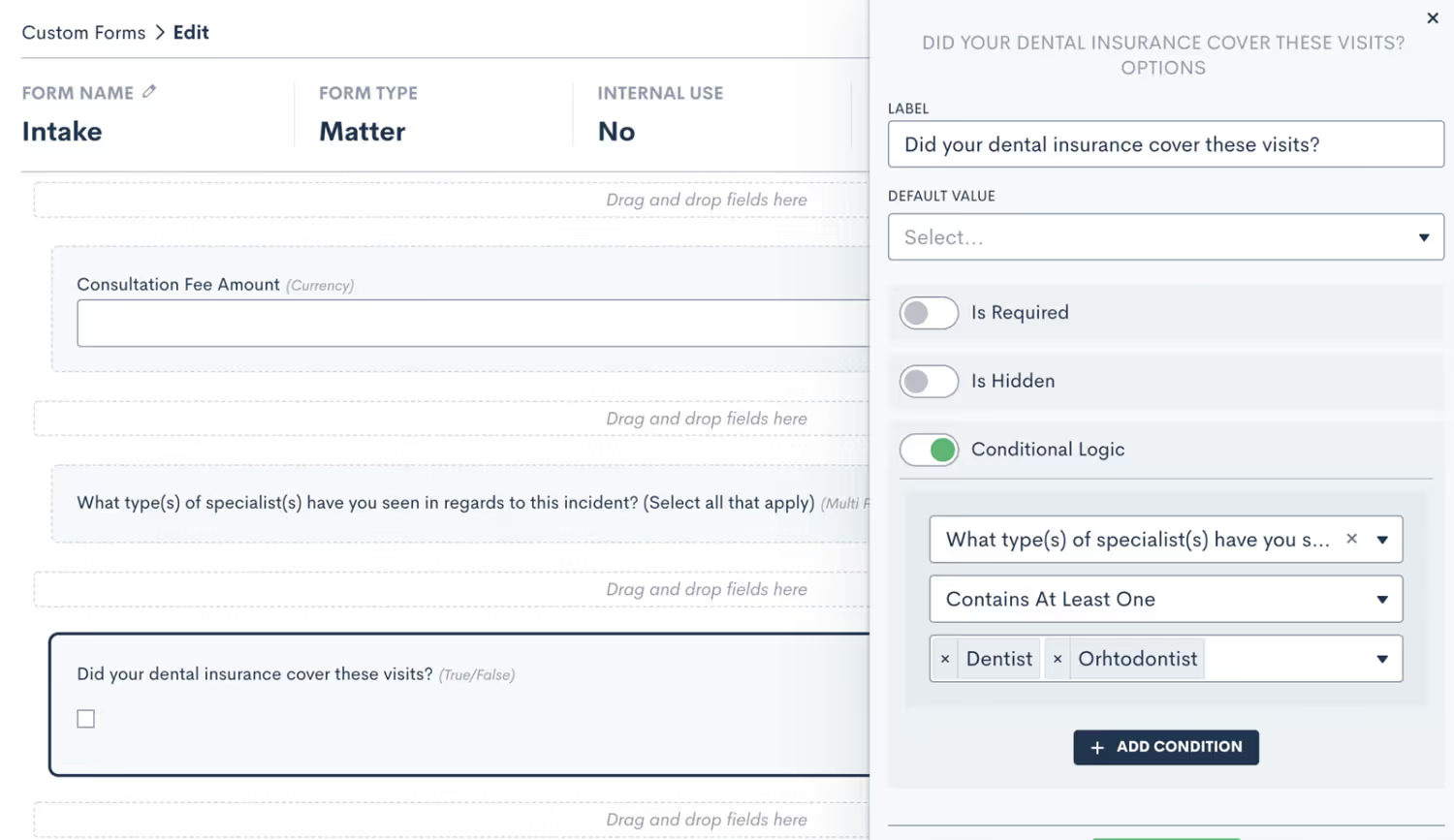
Change Main Contact/Company on a Matter
If your firm often works with matters that have more than one contact, such as a married couple, you may prefer one contact or the other to be listed as the primary name on the matter in your CRM. To that end, you can now easily swap the main contact on a matter from within Lawmatics. Simply click the arrow icon adjacent to a contact's name in their profile, and then select an alternate contact from within your CRM. The same functionality is applicable to company matters. This new feature helps you keep your CRM organized and accurate so that you can always find your matters with ease.
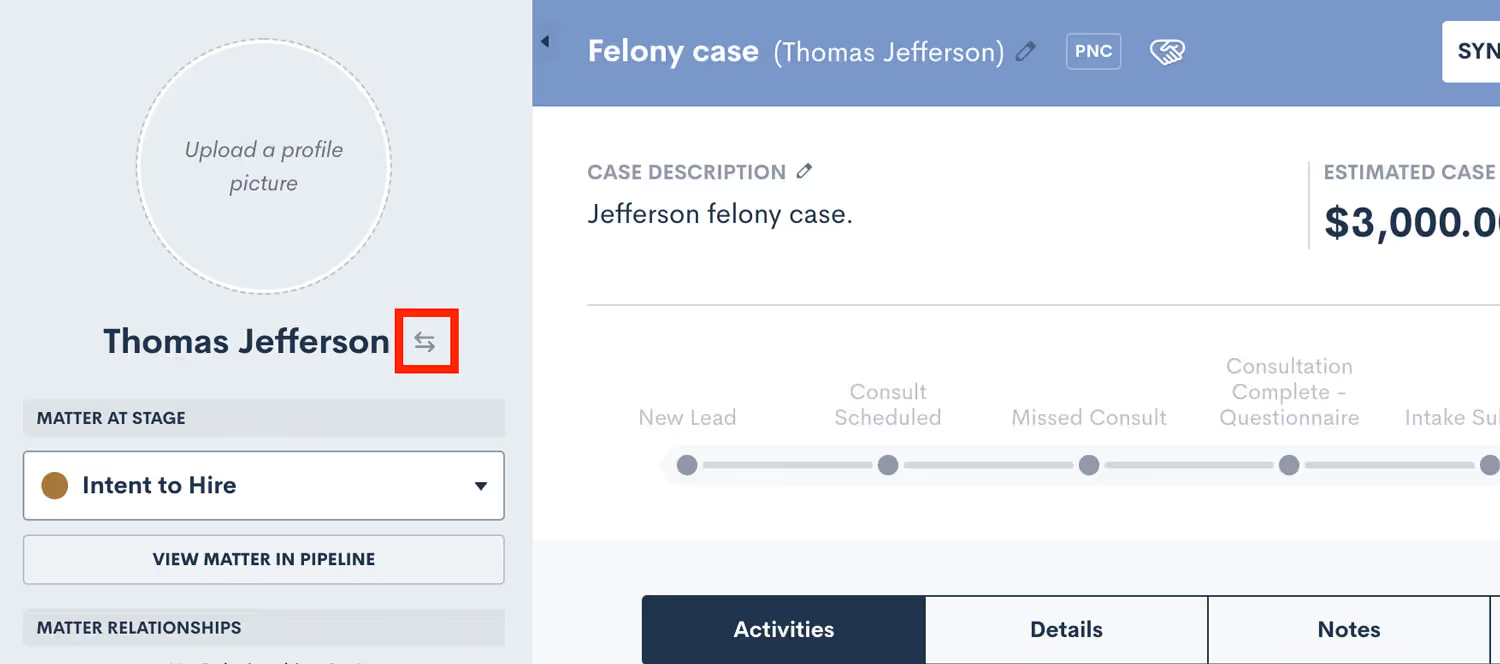
Hours Billed Report
Our new Hours Billed Report provides a real-time snapshot of billable hours based on criteria of your choice, so you can make business decisions accordingly. Get as granular as you need with your report by selecting one or more of the following search criteria: date range, user, and practice area. Once you’ve made your selection, the Hours Billed Report will display the total amount of hours billed per user.To learn more about using this report, click here. If you are not yet using the Time & Billing feature in Lawmatics, email us at support@lawmatics.com to learn more or to add it to your account.

Lawmatics Payments - Successful Notifications
Collecting payment is an essential step in the client lifecycle. Consequently, you can now receive an email or in-app notification when a client payment is submitted and successfully processed via Lawmatics Payments. Each user can select their notification preferences as they see fit, so that all parties responsible for client payment stay in the loop.

Log Trust Balance Refund
Lawmatics Billing is your firm’s one-stop-shop for all things payment-related, including your firm’s trust accounting. In the event of a remaining trust balance or an accidental overpayment, you can now manually log a refund of a client’s trust balance from within the client’s contact record, their matter or in the Trust Account tab.To learn more about managing trust account activity in Lawmatics, click here
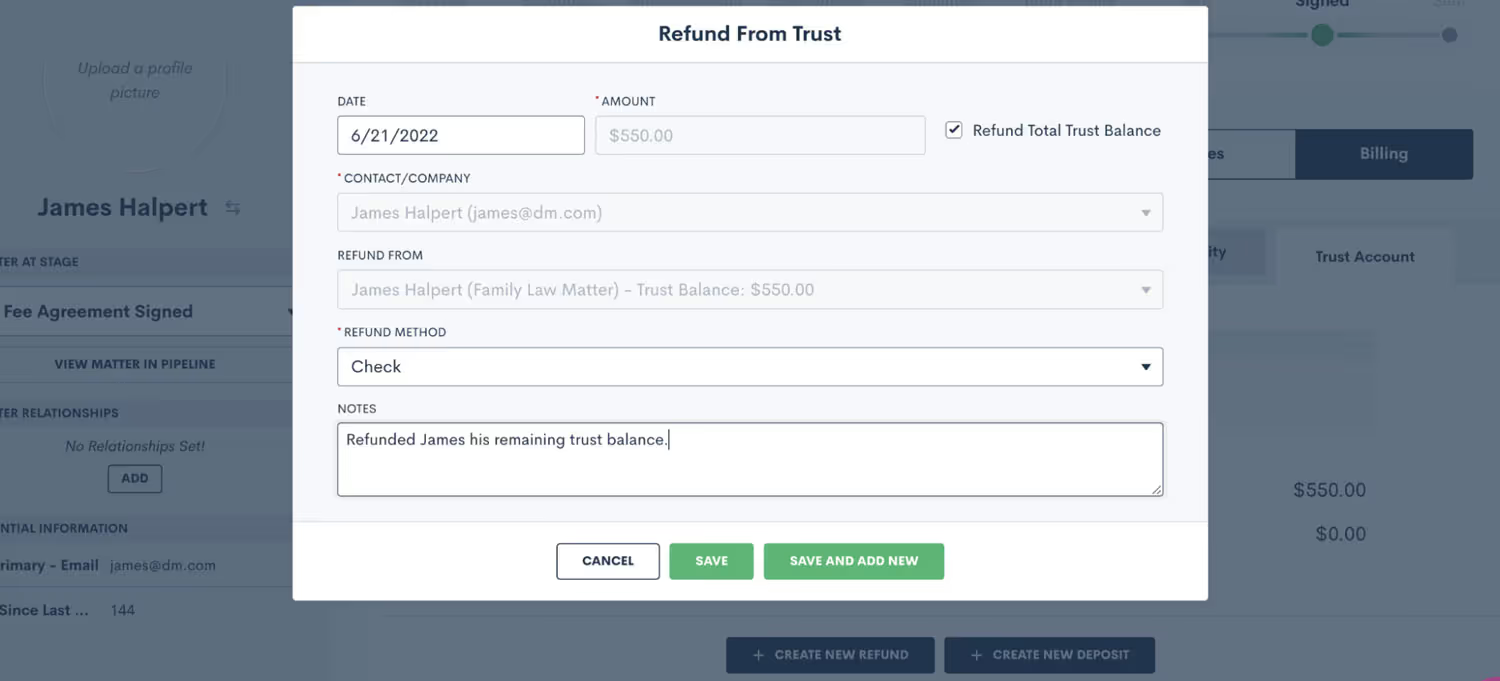
In-app File Preview
You can now easily view a preview of files saved to a matter, including .docx and .xls file types. This improvement to our file storage system makes it much more convenient to locate and view files without any extra tedious steps or waiting for a download.

This release also includes many bug fixes and behind the scenes improvements to optimize your Lawmatics experience. We hope that you enjoy these new features and put them to good use. See you back here with more new features and enhancements very soon :wink: 👋 ! P.S. Not using Lawmatics yet? Book a personalized demo to learn how we can help you grow your law firm!
Subscribe to get our best content in your inbox
Ready to grow your law firm with Lawmatics?
Schedule a demo of legal’s most trusted growth platform.
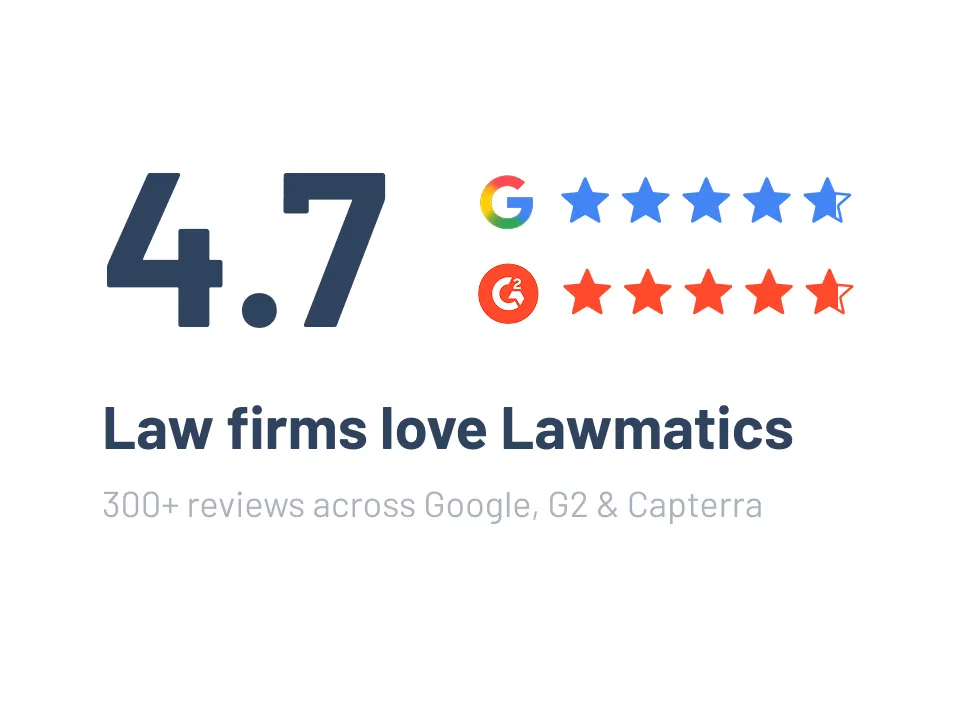




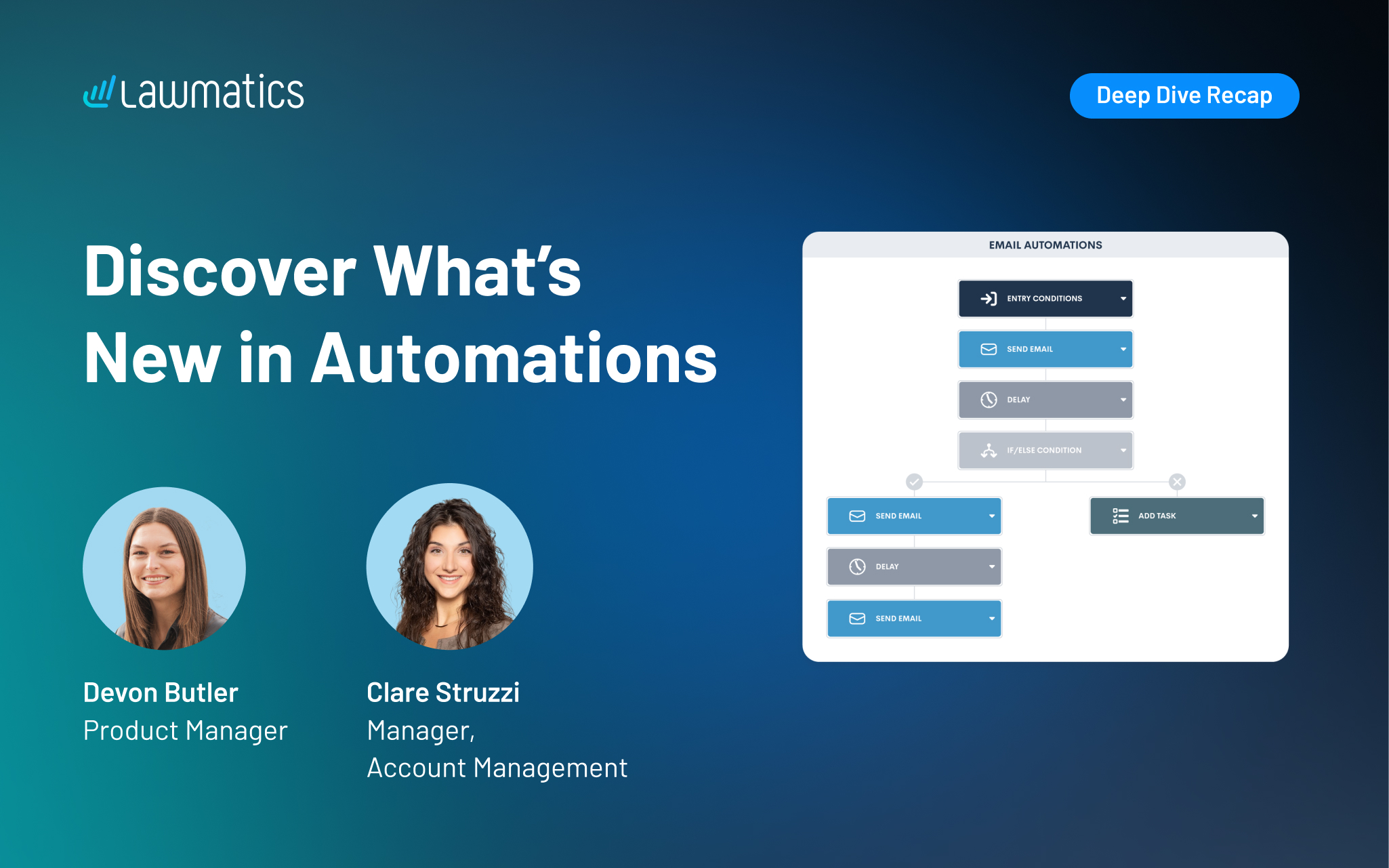


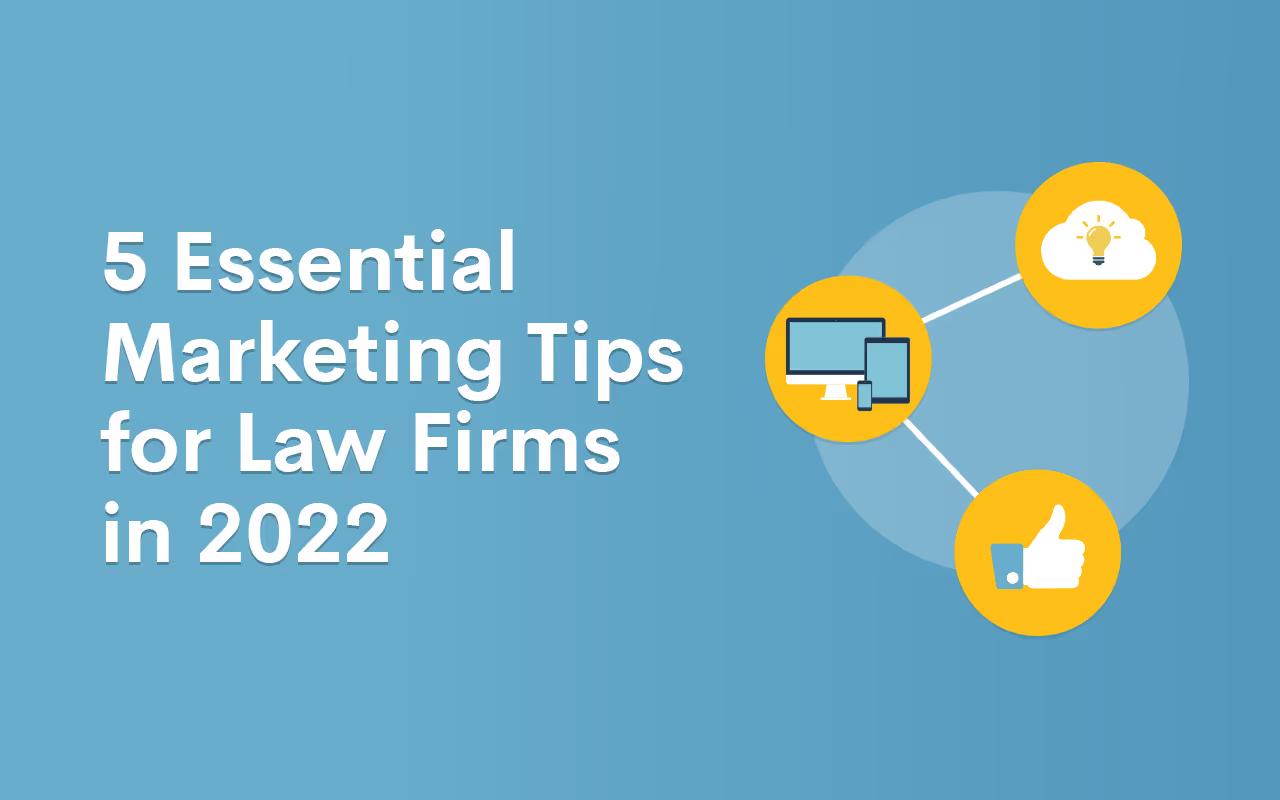
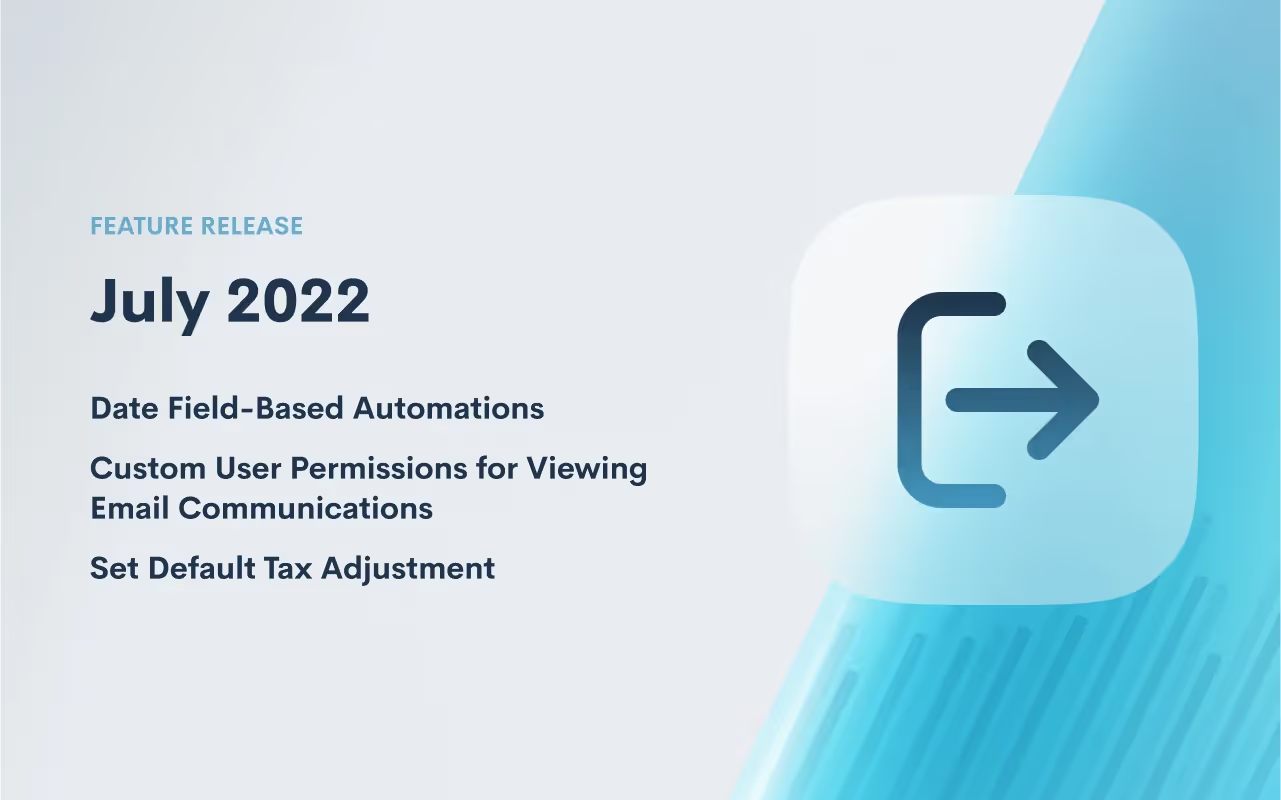
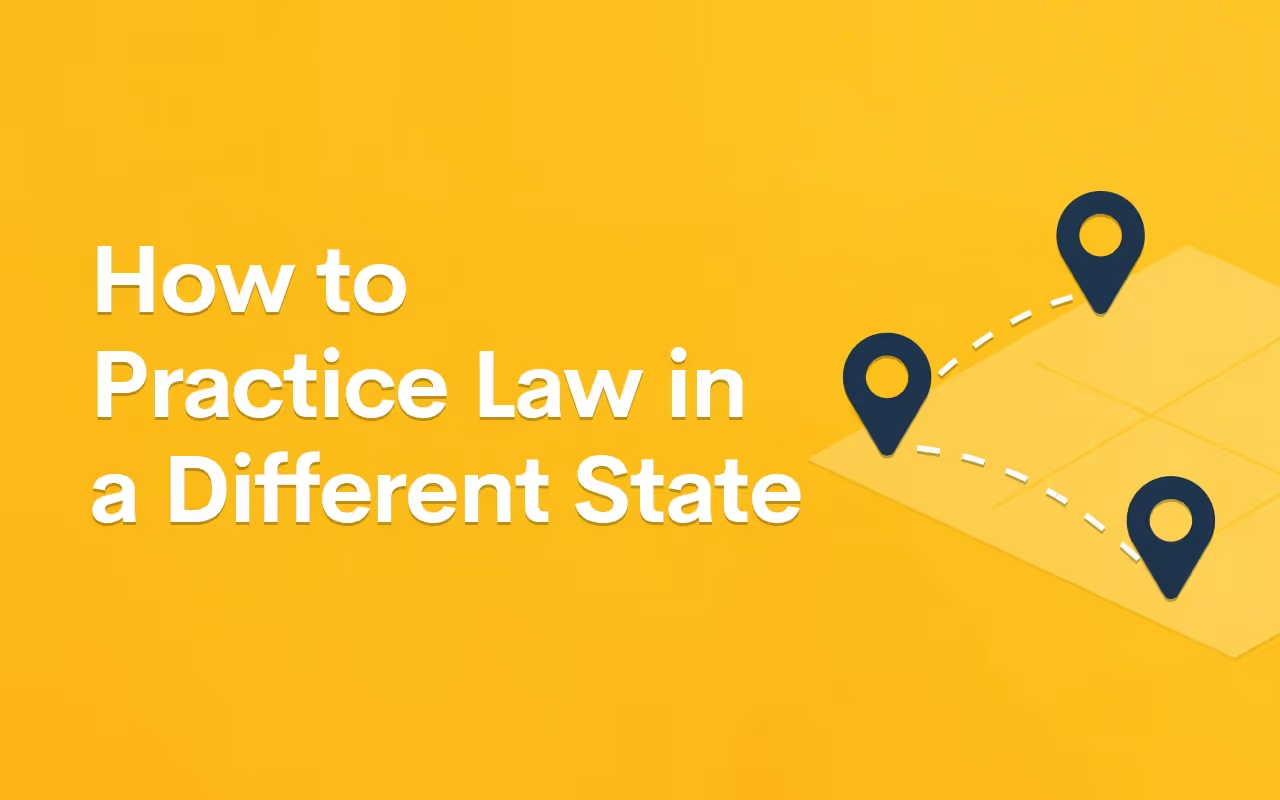


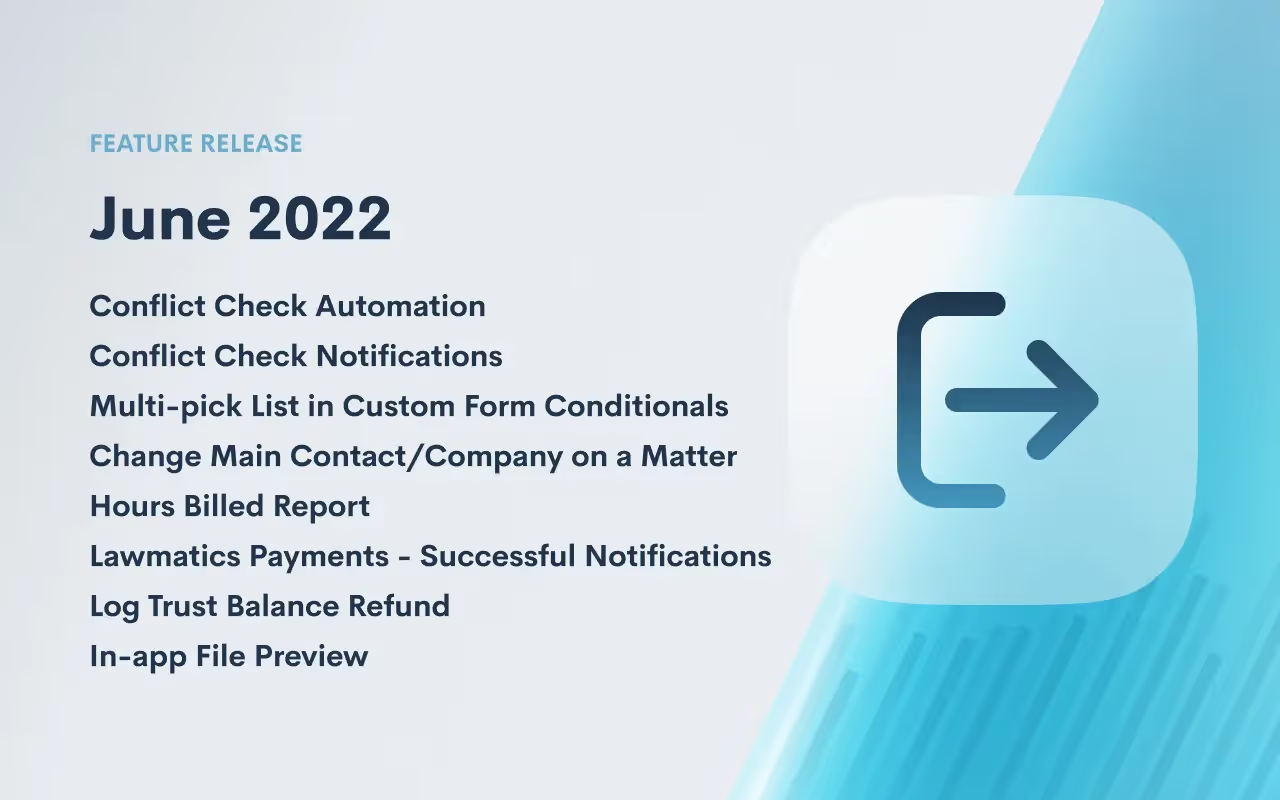
.avif)
.avif)

.avif)
